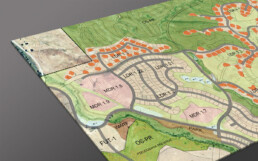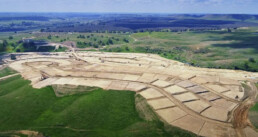CASE STUDIES
NORTH SHORE MILLERTON
Preserve at Millerton
EXPERTISE APPLIED TO:
- Resurrecting Defaulted Development
- Environmentally-Sustainable Infastructure Planning
- Compliance Issuing
- Project Cost Efficiencies and Management
- Water and Wastewater Infastructure Planning
The Client
An investor who acquired the development for assumption rights and began the process of resurrecting the stalled project.
The Project
The North Shore Millerton project was approved as part of the Rio Mesa Area Plan in Madera County and was envisioned to be a component of the new city to be developed around the future University of California Campus proposed in 1992.
The UC Campus location was changed to Merced County in 1994 and for the next twenty (20) years the Rio Mesa area development plans laid dominant in hibernation.
In 2008 the North Shore Millerton project was approved as a 2,000-acre Specific Plan with a mixture of villages comprising 3,000 residential dwelling units, commercial/retail, and schools.
The Scenario
Over an 8-year period the original developer was unable to complete the necessary environmental mitigation and secure financing for the initiation of development on the project and was forced into foreclosure and default in 2016.
In 2016 the property was acquired by an investor in the development for assumption rights and began the process of resurrecting the project.
In fall of 2016 Catalyst was invited to meet with the new owner/developer and was hired immediately thereafter as the project manager.
Project Details
The first steps were to initiate the compliance with the required biological and natural resources mitigation. The project was eventually reduced in size and buildout to half the approved design. The northern half of the project was placed into a Nature Conservancy Preserve for endangered species and native American sites.
Once this was accomplished the developer changed to the name of the project from North Shore Millerton to the Preserve at Millerton to reflect the 1,000-acre conservancy area that would be preserved by his endowment.
The next steps were to develop an infrastructure system utilizing the newest and best available technology to make the project environmentally sustainable. While the infrastructure was being engineered the project began the design process to incorporate the natural topography and retain the environmental amenities such as Cottonwood Creek and the mature Valley Oak Trees for the 1,400 units on the property.
In any development the most expensive aspects are those that are not usually seen (as they are either underground or hidden from view). Those being the water distribution system and the wastewater collection and treatment system. Catalyst worked with various firms to value engineer those system so that they were designed and constructed on an incremental and expandable level – as not to incumber the cost of the full system up front and overburden the construction budget. This allowed the developer to finance the first phase of the systems and with the first bulk sale of lots the water/wastewater systems debt was retired. During the second phase expansion of those systems funds collected from the building and impact fees of the first phase would be utilized to construct the necessary system capacity increases.
In order to keep the costs down the decision to have all private roads and improvements was implemented, as well as, the development was to be private and gated to add a level of security and safety.
During the re-design and infrastructure stage of 3 years massive amount of interest developed for the project that resulted in the pre-sale of 243 lots by Woodside Homes with a reservation of an additional 300 lots.
In August 2019, the first 243 lots were approved with a home construction start date of October 2021.
During 2020 the project received approval for the construction of 354 additional home lots, 15 acres of multiple family, 3-acres of retail/commercial and a 13-acre STEM Elementary School, as well as, a Cal Fire Station on-site.
Six years from a defaulted project to home construction was a Herculean task that involved and detailed a multi-disciplinary approach of organically structuring the development of a barren property to a fully functional “new city” or “village” that required all urban level improvements from sub-surface to house framing.



